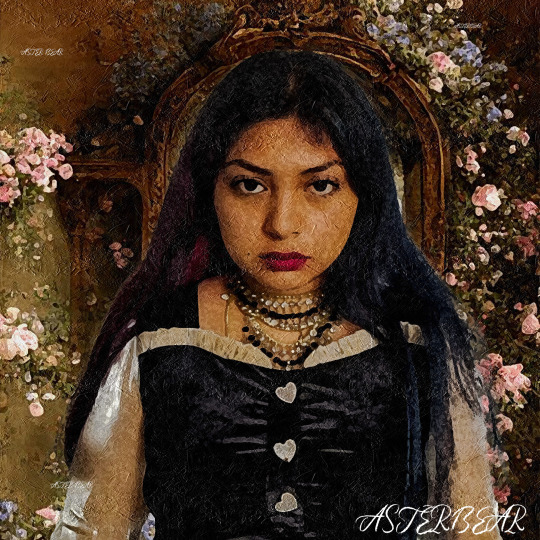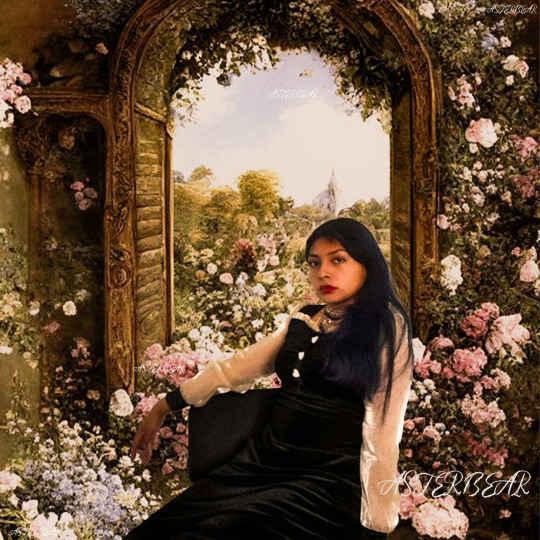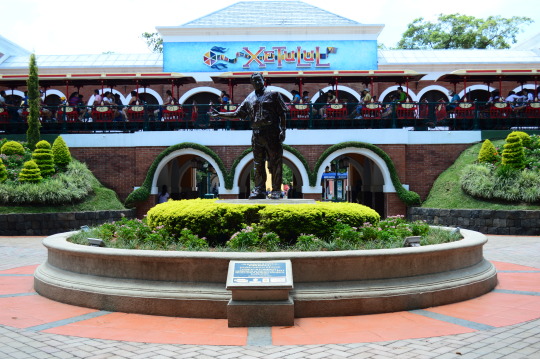#Belleza de Mexico
Text

Sun set
#blas torillo#blas torillo photography#nikon#professional photography#fotografía profesional#méxico#mexico#puebla#cuetzalan#silhouette#contraluz#poste#lamo#street lamp#minimalism#minimalismo#minimalist#sun#sol#puesta de sol#sunset#arte#art#fine art#fine art photography#fotografía en la calle#street phtography#street photo#street#belleza
3 notes
·
View notes
Text
"Te quiero a las diez de la mañana, y a las once, y a las doce del día. Te quiero con toda mi alma y con todo mi cuerpo, a veces, en las tardes de lluvia. Pero a las dos de la tarde, o a las tres, cuando me pongo a pensar en nosotros dos, y tú piensas en la comida o en el trabajo diario, o en las diversiones que no tienes, me pongo a odiarte sordamente, con la mitad del odio que guardo para mí."

-Jaime Sabines ("Te quiero a las diez de la mañana", fragmento).
#mexico 🇲🇽#museo#museology#art#art exhibition#poems and poetry#jaime sabines#poema de amor#poesia poema#museo soumaya#soumaya museum#sculpure#mexico#visit mexico#poesía#poesia mexicana#🇲🇽#mexican museum#mexican beauty#belleza mexicana#love#light academia#art academia#poetry#poetry academia#sculpture#cozy aesthetic#love academia#amor#art aesthetic
5 notes
·
View notes
Text
i have a lot of different religious imagery in my room—a statue of Oshun that i hand painted myself, a statue of Zeus, a candle of La Virgen de Guadalupe…maybe above all things i simply worship beauty.
#notes app poetry#poetry#tumblr poems#oshun#oshunenergy#african spirituality#zeus#greek mythology#la virgen de guadalupe#mexico#catholicism#beauty#belleza#spirituality#religion#christian
3 notes
·
View notes
Text

Belleza natural
2 notes
·
View notes
Text
Corruption Leitner Reading List
The full list of submissions for the Corruption Leitner bracket. Bold titles are ones which were accepted to appear in the bracket. Synopses and propaganda can be found below the cut. Be warned, however, that these may contain spoilers!
Baxendale, Trevor: Eater of Wasps
Bellatín, Mario: Salón de Belleza (Beauty Salon)
Benson, E.F.: Caterpillars
Brennan, Joseph Payne: The House on Stillcroft Street
Butler, Octavia E.: Bloodchild
Camus, Albert: The Plague
Catling, Patrick Skene: The Chocolate Touch
Christie, Agatha: The Mirror Crack'd from Side to Side
Cresswell, Helen: The Bongleweed
Dick, Philip K.: The Hanging Stranger
Disch, Thomas M.: The Roaches
Enríquez, Mariana: Pájaros en la noche (Birds in the night)
Gilbert, Stephen: Ratman's Notebooks
Grant, Michael: Plague
Herbert, James: The Rats
Hagen, Ingeborg Refling: The Bridegroom
Hawthorne, Nathaniel: Rappaccini's Daughter
Hodgson, William Hope: The Voice in the Night
Kaaberbol, Lene: The Cruel Empress
Keyes, Daniel: The Touch
Kingfisher, T.: What Moves the Dead
Knight, Harry Adam: The Fungus
Krall, Dan: Sick Simon
La Sala, Ryan: The Honeys
Lovecraft, H. P.: The Rats in the Walls
Mann, Thomas: Death in Venice
Mariotte, Jeff: Black Train
Meruane, Lina: Fruta podrida (Rotten fruit)
Messenger, Stephanie: Melanie's Marvelous Measles
Meyer, Stephenie: The Host
Milson, Matthew: Plague City
Moreno-Garcia, Silvia: Mexican Gothic
Morris, Tiffany: Green Fuse Burning
Nabokov, Vladimir: Lolita
Nutting, Alissa: Ant Colony (From the book Unclean Jobs for Women and Girls)
Ostrovsky, Alexander Nikolayevich: The Storm
Poe, Edgar Allan: Fall of the House of Usher
Poe, Edgar Allan: The Facts In The Case Of M. Valdemar
Poe, Edgar Allan: The Masque of the Red Death
Pratchett, Terry: The Amazing Maurice And His Educated Rodents
Quiroga, Horacio: El almohadón de plumas (The feather pillow)
Raymond, E.S.: Felicity Floo Visits the Zoo
Rumfitt, Alison: Brainwyrms
Scarrow, Alex: Plague Land series
Smith, Guy N.: The Festering
Stine, R.L.: Go Eat Worms!
Stine, R.L.: The Bugman Lives!
Tran, Trang Thanh: She is a Haunting
Umansky, Kaye: Pongwiffy Series
van Dahl, Fiona: Eden Green
Vian, Boris: L'écume des jours (Froth on the Daydream)
Zelazny, Roger: To Die in Italbar
Zamyatin, Yevgeny Ivanovich: We
Baxendale, Trevor: Eater of Wasps
Synopsis: "The TARDIS lands in the sleepy English village of Marpling, as calm and peaceful as any other village in the 1930s. Or so it would seem at first glance. But the village is about to get a rude awakening.
The Doctor and his friends discover they aren't the only time-travellers in the area: a crack commando team is also prowling the Wiltshire countryside, charged with the task of recovering an appallingly dangerous artefact from the far future — and they have orders to destroy the entire area, should anything go wrong.
And then there are the wasps... mutant killers bringing terror and death in equal measure. What is their purpose? How can they be stopped? And who will be their next victim?
In the race to stop the horror that has been unleashed, the Doctor must outwit both the temporal hit squad, who want him out of the way, and the local police — who want him for murder. "
Why it's Corruption: There's a dude filled with mutant killer wasps, and there's also a whole bunch of family drama and toxic love.
Bellatín, Mario: Salón de Belleza (Beauty Salon)
A strange plague appears in a large city. Rejected by family and friends, some of the sick have nowhere to finish out their days until a hair stylist decides to offer refuge. He ends up converting his beauty shop, which he’s filled with tanks of exotic fish, into a sort of medieval hospice. As his “guests” continue to arrive and to die, his isolation becomes more and more complete in this dream-hazy parable by one of Mexico’s cutting-edge literary stars.
Bellatín shows the horrors of the AIDS crisis and how the disease strips you of your humanity and body.
Benson, E.F.: Caterpillars
In the beautiful Villa Cascana on the Italian Riviera, all is not as it seems. Why does the hostess leave a perfectly charming bedroom unoccupied? Why does Arthur Inglis present our nameless narrator with a caterpillar in a cardboard pill-box one lunchtime? And rather more bizarrely, why do luminous, bloated and gigantic versions of this creature haunt his dreams? Or could it possibly be that he is wide awake?
At the end of the story, the narrator is visiting the Stanleys in England. It turns out that Inglis is riddled with cancer. No operation is possible to save him. Mrs. Stanley can’t help but thinking he caught it at the villa even though she took precautions to clean that vacant room and have no one stay there. It seems that someone had died of cancer in that room a year before. The notion of cancer as something infectious may, given the state of medicine at the time, been prevalent (and some cancers are caused by infectious agents).
I don't think that I need to explain why caterpillars either supernaturally spreading a lethal disease or being a metaphor for said disease is peak Corruption.
Brennan, Joseph Payne: The House on Stillcroft Street
A carnivorous plant takes over reclusive collector Millward Frander's house -- and Millward himself.
Butler, Octavia E.: Bloodchild
In the world this short story takes place in, human hosts (almost always male) act as incubators for eggs of the female aliens, who look something like human-size centipedes. If the host is lucky, the mother gets to him in time to extract the newly hatched larvae before they eat their way out. This relationship is presented as approaching symbiotic; the aliens (mostly) cherish the human families from whom they select their hosts, but the hosts don't get a lot of choice in the matter.
In various interviews and her afterword to "Bloodchild," Butler explains the motivations behind the story's creation. She wrote "Bloodchild" to explore her fear of parasitic insects invading her body, specifically the botfly. She also aimed to depict a human male's experience of pregnancy, including the physical risks and the development of maternal feelings towards his alien offspring.
***
A short Science fiction horror story about the unusual bond between a race of large, centipede-like aliens called the Tlic and a colony of humans who have escaped Earth and settled on the Tlic planet. When the Tlic realize that humans make excellent hosts for Tlic eggs, they establish the Preserve to protect the humans, and in return require that every family choose a child for implantation.
Camus, Albert: The Plague
A haunting tale of human resilience and hope in the face of unrelieved horror, Albert Camus' iconic novel about an epidemic ravaging the people of a North African coastal town is a classic of twentieth-century literature.
The townspeople of Oran are in the grip of a deadly plague, which condemns its victims to a swift and horrifying death. Fear, isolation and claustrophobia follow as they are forced into quarantine. Each person responds in their own way to the lethal disease: some resign themselves to fate, some seek blame, and a few, like Dr. Rieux, resist the terror.
***
The story is set in the Algerian city of Oran, which is quarantined after an outbreak of bubonic plague. The novel's protagonist works tirelessly to combat the disease and care for the sick, all while grappling with the existential questions that arise in the face of suffering and death. The novel presents a snapshot into life in Oran as seen through the author's distinctive absurdist point of view.
Catling, Patrick Skene: The Chocolate Touch
The book is a children's adaption of the myth of King Midas. As punishment for overindulging in sweets against doctor's orders, John Midas becomes cursed by a mysterious shopkeeper and finds that everything his lips touch turns to chocolate. Becuase of this, he can no longer hydrate himself with water or eat nutritious food, and his mother turns to chocolate after he kisses her. This aligns with the fear of sickness, both from the spread of the titular 'Chocolate Touch' and, because of the moral lesson the book imparts, sickness from unhealthy eating.
Christie, Agatha: The Mirror Crack'd from Side to Side
One minute, silly Heather Badcock had been gabbing on to her movie idol, the glamorous Marina Gregg. The next, Heather suffered a massive seizure. It turned out to be a deadly poison. But for whom was it really intended?
Marina’s frozen expression suggested she had witnessed something horrific. While others searched for material evidence, Jane Marple conducted a very different investigation – into human nature. Serious Spoilers for why this works as Corruption Leithner: Years before the plot Heather the victim got sick and was told to quarantine. She did not do that. She went to see her favourite star Marina Gregg instead, infecting the idol with disease costing her her child and ruining her life in many ways. Marina killed Heather. With this book showing the corruptive effect of... well Corruption.
Cresswell, Helen: The Bongleweed
Warning: Bongleweed on the loose! The Bongleweed plant is weird and wonderful, and it grows faster than anything! Becky tricks stuck-up Jason into sprinkling some seeds in Pew Gardens -- but fun soon turns to fear as a bushy Bonglweed jungle springs up, with no signs of stopping. Before long, the Gardens and the local graveyard are completely covered - and now the Bongleweed is heading for the rest of the village! It's up to Becky and Jason to stop the wickedly wild weed before it's too late...
Dick, Philip K.: The Hanging Stranger
The protagonist, a store owner Ed Loyce, is disturbed when he sees a stranger hanging from a lamppost, but finds that other people consider the apparent lynching unremarkable. He finds evidence that alien insects have taken over, manages to get out of town, talks to the police commissioner, who believes him, and after getting all the information about what Ed knows, explains that the body was hung to see whether anyone reacted to it, anyone they didn't have control over. He then takes Ed outside and hangs him from a lamppost.
Disch, Thomas M.: The Roaches
Marcia Kenwell has an obsessive fear of cockroaches. She routinely scours her apartment with roach-kill, disinfectant, and cleaner. Ever since she moved to the city she has been unable to rid herself of the pesky bugs. She was warned about them by her aunt and her mother had a phobia to all bugs, but Marcia first encounters them at one of her first jobs and it has been a never-ending battle since then. She desperately seeks a new place to live especially after the neighbors move in next door. The two men and one woman (unclear who is related and who is a lover) are loud, foreign, and dirty as Marcia sees it. Their presence brings in more roaches and this deeply angers Marcia. One day, she encounters some roaches in her apartment and without thinking, she verbally commands them to leave. In an instant, all the roaches leave the apartment. She slowly finds she has the ability to command the roaches. In a frenzy of anger, she directs them all into her neighbor's apartment. She hears yelling and screaming and then tells them to disperse. When the landlady comes the neighbor's room, she sees the mess and demands they leave. Back in her room, Marcia opens a cupboard and all the roaches flood out onto her. Instead of repulse, she feels utter love and invites all of New York's cockroaches to visit her.
Enríquez, Mariana: Pájaros en la noche (Birds in the night)
A girl has a medical condition that makes her skin begin to rot. She becomes a walking corpse in her teen years, loses her limbs, eyes and body to the rot.
Gilbert, Stephen: Ratman's Notebooks
"When his nagging mother discovers a rat infestation, the anonymous writer of these notebooks sets out to drown the pests, but finds himself unable to go through with it. Instead, he befriends the rats, learning to train and communicate with them. Before long he has the idea of using the rats for revenge against a world in which he has been a failure. His target is his hateful boss, Mr. Jones, who treats him with supreme disrespect and plans to fire him and replace him with someone less expensive. The narrator records his plans in chilling detail as his campaign for vengeance progresses from vandalism to robbery to the most horrific of murders..."
Grant, Michael: Plague
It's been eight months since all the adults disappeared. GONE.
They've survived hunger. They've survived lies. But the stakes keep rising, and the dystopian horror keeps building. Yet despite the simmering unrest left behind by so many battles, power struggles, and angry divides, there is a momentary calm in Perdido Beach.
But enemies in the FAYZ don't just fade away, and in the quiet, deadly things are stirring, mutating, and finding their way free. The Darkness has found its way into the mind of its Nemesis at last and is controlling it through a haze of delirium and confusion. A highly contagious, fatal illness spreads at an alarming rate. Sinister, predatory insects terrorize Perdido Beach. And Sam, Astrid, Diana, and Caine are plagued by a growing doubt that they'll escape - or even survive - life in the FAYZ. With so much turmoil surrounding them, what desperate choices will they make when it comes to saving themselves and those they love?
Herbert, James: The Rats
The Rats In the Walls
Hagen, Ingeborg Refling: The Bridegroom
A tragic romance novel set in Norway at the onset of the Black Death. The protagonist, Elise, is in love with a fiddler, Erik Ekset, and plans to meet him at the midsummer festivities. When he does not arrive, she waits for him until the news of the plague comes -- and the plague comes with it, killing her family. Distraught, Elise sets out to find her beloved and journeys through a nightmare of plague-stricken countryside, and she dies trying to find his grave.
Strong themes associating disease with music, love, and community throughout -- the plague first strikes at a wedding with a dead fiddler arriving in a cart pulled by a pale horse, and the bride -- now bereaved -- appears again near the end, inconsolable.
Hawthorne, Nathaniel: Rappaccini's Daughter
Giovanni Guasconti, a young student renting a room in Padua, has a view from his quarters of a beautiful garden. Here, he looks at Beatrice, the beautiful daughter of Dr. Giacomo Rappaccini, a botanist who works in isolation. Beatrice is confined to the lush and locked gardens, which are filled with exotic poisonous plants grown by her father. Having fallen in love, Giovanni enters the garden and secretly meets with Beatrice a number of times, while ignoring his mentor, Professor Pietro Baglioni. Professor Baglioni is a rival of Dr. Rappaccini and he warns Giovanni that Rappaccini is devious and that he and his work (which involves using poison as medicine) should be avoided.
Giovanni notices Beatrice's strangely intimate relationship with the plants as well as the withering of fresh regular flowers and the death of an insect when exposed to her skin or breath. On one occasion, Beatrice embraces a plant in a way that she seems part of the plant itself; then she talks to the plant, "Give me thy breath, my sister, for I am faint with common air."
Giovanni eventually realizes that Beatrice, having been raised in the presence of poison, has developed an immunity to it and has become poisonous herself. A gentle touch of her hand leaves a purple print on his wrist. Beatrice urges Giovanni to look past her poisonous exterior and see her pure and innocent essence, creating great feelings of doubt and confusion in Giovanni.
In the end, Giovanni becomes poisonous himself: insects die when they come into contact with his breath. Giovanni is troubled by this, which he sees as a curse, and he blames Beatrice. Professor Baglioni gives him an antidote to cure Beatrice and free her from her father's cruel experiment. However, when Beatrice drinks the antidote, she becomes sick and dies. Before realizing that Beatrice is dying, Dr. Rappaccini excitedly welcomes the love between his two creatures, his daughter and her suitor, Giovanni, who has been transformed so that he can now be a true and worthy companion to Beatrice. While Beatrice is dying, Professor Baglioni looks down from a window into the garden and triumphantly shouts "Rappaccini! Rappaccini! and is THIS the upshot of your experiment!"
Hodgson, William Hope: The Voice in the Night
The main character and his fiancée, aboard the ship Albatross, were abandoned by the ship's crew, who took the remaining lifeboats. After building a raft, they escaped from the sinking vessel and found an apparently abandoned ship in a nearby lagoon, covered with a fungus-like growth. They attempted to remove this growth from the living quarters but were unable to do so; it continued to spread, and so they returned to their raft. The nearby island was also covered with this growth, except for a narrow beach. Eventually, the man and his fiancee found the fungus growing on their skin and felt an uncontrollable urge to eat it. They discovered that other humans on the island have been entirely absorbed by the strange fungal growth.
As the man in the rowboat rows away from the sailors to whom he is telling his tale, just as the sky is lightening, the narrator can dimly see a grotesquely misshapen figure in the rowboat, scarcely recognisable as human.
Kafka, Franz: The Metamorphosis
1) "One morning, when Gregor Samsa woke from troubled dreams, he found himself transformed in his bed into a horrible vermin."
2) Gregor's family is horribly toxic to him. none of them work, relying entirely on gregor to provide for them. Gregor's job is hard and exhausting, he wants to quit but feels unable to since his family depends on him so much. when he becomes an insect, his family treats him horribly and worries more about the money than Gregor's wellbeing
3) After Gregor's transformation his sister, mother, and father all get a job, proving that they were capable of providing for themselves all along. after Gregor's death they go out. "Leant back comfortably on their seats, they discussed their prospects and found that on closer examination they were not at all bad—until then they had never asked each other about their work but all three had jobs which were very good and held particularly good promise for the future." Gregor's sense of duty and the family's unwillingness to work were keeping them all miserable and codependent.
Kaaberbol, Lene: The Cruel Empress
"When Hay Lin receives an ancient lantern from one of her grandmother's friends, strange things begin to happen. She wanders into a store and finds a magical mirror, and then hears a mysterious call for help. The other Guardians of the Veil are worried. Together, they try to find out who is trying to contact Hay Lin. To solve the mystery, the Guardians travel through a portal to a city where they face a cruel empress...and an unfulfilled promise. "
In this boos W.i.t.c.h girls fight the titular Cruel Empress who uses control over insects to rule over people with an iron fist. So they fight a Corruption avatar essentially.
Keyes, Daniel: The Touch
The book follows Barney and Karen stark who are trying for a baby. an incident at barney's workplace contaminates him with radioactive dust and barney spreads it to his home and his wife. Fortunately, the incident is noticed quickly, and starks and their house are put through a decontamination process. Unfortunately, their neighbours are so terrified of radioactivity that they cut all relations with the Starks and bully them. isolation exposes the worst side of Barney who begins to get violent, and Karen copes by escapism, focusing entirely on her newly conceived baby. The Touch is corruption-aligned because the relationship between Karen and Barney is strained but they keep trying for a baby, the hostile community of the neighborhood is reminiscent of the episode 164 'the sick village', and the entire novel is kickstarted by Barney's contamination with radioactive dust.
Kingfisher, T.: What Moves the Dead
When Alex Easton, a retired soldier, receives word that their childhood friend Madeline Usher is dying, they race to the ancestral home of the Ushers in the remote countryside of Ruravia.
What they find there is a nightmare of fungal growths and possessed wildlife, surrounding a dark, pulsing lake. Madeline sleepwalks and speaks in strange voices at night, and her brother Roderick is consumed with a mysterious malady of the nerves.
Aided by a redoubtable British mycologist and a baffled American doctor, Alex must unravel the secret of the House of Usher before it consumes them all.
***
Based on The Fall Of The House Of Usher, this adaptation delves deeper into the characters and the minutiae of their fear than the original, with much more gore and in-depth time spent at the titular house. As the plot synopsis says, "a nightmare of fungal growths and possessed wildlife"
Knight, Harry Adam: The Fungus
London mycologist Jane Wilson's efforts to cultivate a new species of agaricus bisporus fungus, using an experimental enzyme, CT-UT-8471, have success in the laboratory. Unfortunately, despite her best efforts at containment, she accidentally carries several thousand microscopic cells of a. bisporus infused with CT-UT-8471. The enzyme spreads throughout England, causing all manner of local fungi to begin growing like crazy, soon overtaking the whole country, including infesting the bodies of human beings. None of this was on purpose, but once the fungus has taken over Britain, Jane goes full mad scientist and declares that it is Gaia's Vengeance, so she goes from unintentionally causing catastrophe to being glad that she did. It's eventually revealed that she isn't as immune to the fungus as she thought; after she's killed it turns out her insides are riddled with the stuff.
Krall, Dan: Sick Simon
The book follows Simon through a week of school, as his illness spreads to everyone around him. The illustrations are just. So gross.
La Sala, Ryan: The Honeys
Mars has always been the lesser twin, the shadow to his sister Caroline's radiance. But when Caroline dies under horrific circumstances, Mars is propelled to learn all he can about his once-inseparable sister who'd grown tragically distant.
Mars's genderfluidity means he's often excluded from the traditions -- and expectations -- of his politically-connected family. This includes attendance at the prestigious Aspen Conservancy Summer Academy where his sister poured so much of her time. But with his grief still fresh, he insists on attending in her place.
What Mars finds is a bucolic fairytale not meant for him. Folksy charm and sun-drenched festivities camouflage old-fashioned gender roles and a toxic preparatory rigor. Mars seeks out his sister's old friends: a group of girls dubbed the Honeys, named for the beehives they maintain behind their cabin. They are beautiful and terrifying -- and Mars is certain they're connected to Caroline's death.
But the longer he stays at Aspen, the more the sweet mountain breezes give way to hints of decay. Mars’s memories begin to falter, bleached beneath the relentless summer sun. Something is hunting him in broad daylight, toying with his mind. If Mars can't find it soon, it will eat him alive.
Lovecraft, H. P.: The Rats in the Walls
link: https://www.hplovecraft.com/writings/texts/fiction/rw.aspx
After his son dies from injuries sustained during the Great War a man named Delapore leaves New England, with his nine cats, to purchase and restore the hereditary lands of his ancestors, the De la Poer family, in England. Helped by a friend of his son's, who just happens to be the nephew of the man currently in possession of the land, he discovers generations of mistrust and suspicion aided by local traditions of horrible, nasty deeds attributed to the land and his ancestors specifically. Then the cats start acting weird, the narrator starts having troubling dreams and the newly renovated ancestral home may be overrun by an army of nocturnal rats. And things just go downhill from there...
Mann, Thomas: Death in Venice
CW for stalking and themes of child sexual abuse. The main character doesn't get around to acting on his feelings, and the whole thing is very symbolic, but still.
Death in Venice is the story of a German writer, Gustav von Aschenbach, who develops an unhealthy obsession with a Polish boy, Tadzio. The writer follows Tadzio's family to Venice, stalking the boy and having a series of encounters that remind him of death, decay, and aging. In the city, a cholera epidemic rages, and Aschenbach begins to draw connections between the plague and his corrupt obsessions. He eventually tries to ward off his own aging with hair dye and makeup before succumbing to the plague.
Death in Venice explores themes that resonate with the Corruption in a neat package--disease, decay, and obsessive passion all intermingle in a short but memorable novella. For what it's worth, Wikipedia claims that author Thomas Man wrote in a letter that he wanted to explore "passion as confusion and degradation."
Mariotte, Jeff: Black Train
Two cowboys find a stopped train completely overrun by a black mold that infests people and animals, turning them into zombies. They rescue a man named Franklin from the train, who turns out to be the Mad Scientist who created the mold (as a bioweapon), and has devices that can kill it. Unfortunately, Franklin turns out to be more interested in getting revenge on his family than stopping the plague, and the cowboys have to take matters into their own hands before it can spread further.
Meruane, Lina: Fruta podrida (Rotten fruit)
Zoila del Campo and her sister María, known as “The Elder”, live in a small town in industrial Chile called Ojo Seco (“Dry Eye”). Here their lives revolve around Zoila’s degenerative disease and María’s job at a fruit export company.
In this setting we see the pressure Zoila is put under when she chooses to resist medical care, and the elaborate means her sister takes to gain money and power in the workplace and, as she does so, the tensions she creates that give the story its shades of the surreal.
Messenger, Stephanie: Melanie's Marvelous Measles
A highly controversial children's book with the moral of the story being that vaccines are bad and measles aren't that bad and will make you stronger in the long run.
Meyer, Stephenie: The Host
Silvery centipedes that burrow into your brain and take over your body? A constant emphasis put on how "kind" and "altruistic" these alien centipedes are and how utopian their society is compared to us violent and selfish humans? Unhealthy romance that never gets acknowledged as such by the narrative? Reads like Corruption to me.
Milson, Matthew: Plague City
Plague City is set in a world beset by a lethal plague, with the city presented as one of the last holdouts of humanity. We’re unsure if the city is alone in this, as there is no communication with the rest of the world, and no one could leave through the city wall even if they wanted to — the belief among the populace is that it’s all that keeps the plague out.
Mayor Coal knows better, however. He knows that the plague is already within the city, with them. He hates it. He detests it on a personal level, and strikes out against it with a vicious ferocity bordering on the monomaniacal, committing atrocities in the process.
Moreno-Garcia, Silvia: Mexican Gothic
In 1950s Mexico City, beautiful young socialite Noemí Taboada receives a letter from her cousin Catalina, begging for help. She firmly believes that her English husband, Virgil Doyle, intends to poison her. Suspecting that Virgil may be after Catalina's money, Noemí's father, Leocadio, sends her to the Doyle home, High Place, which is located in the mountains outside of a small town named El Triunfo. Once there, Noemí is struck by the strange and unwelcoming atmosphere of the Doyles' house and the controlling and patronising attitude of its inhabitants. Catalina is proclaimed to be suffering from consumption and Noemí is mostly kept away from her cousin. Noemí spends her time learning about the Doyle family, which also includes Florence Doyle and the frail family patriarch, Howard. The family has a history of incestuous marriages and deep intergenerational traumas, such as one of Howard's daughters, Ruth, killing several family members before shooting herself.
Twist: When she begins to sleepwalk and experience strange dreams and visions, Noemí decides that she must leave the Doyle household, only to be told that she cannot leave. They reveal that Howard discovered a strain of mushroom that has a symbiotic relationship with humans. The Doyles use this fungus and remain at High Place, the house infused with the spores of the mushrooms, which has grown inside its walls and all around it, in order to heal themselves and prolong their lives. As the fungus's potency is lessened depending on the individual's genetics, the Doyles have intermarried in order to ensure that their offspring can also receive these benefits. Because it is interlaced with mycelium and infested with the mushroom's spores, the house can hold memories, which the family refers to as the "gloom". The spores can also help the Doyles control people who have inhaled them, which frightens Noemí. She grows more horrified, however, when she learns that Howard's wife Agnes was used as a sacrifice to grow the spores - and that Howard can use the gloom to take over the bodies of family members, which he's used to further preserve his own life.
***
Socialite Noemi Taboada enjoys her lavish life in the 1950s Mexico City. She lives in a swirl of taffeta, parties, and unadulterated glamor. However, after receiving a disturbing letter from her newly-wed cousin, Catalina, Noemi finds herself in the remote estate of Catalina's husband, Virgil, and his family. High Place has been in the Doyle family for decades, if not centuries, and seems to pulse with a life-force of its own. The longer Noemi stays, the more bizarre and disturbing things she sees, or at least thinks she sees. With the help of Virgil's younger cousin, Francis, Noemi unearths the dark secrets of the place her beloved cousin now calls home. And all the secrets come with a sickly sweet stench and golden glow.
Morris, Tiffany: Green Fuse Burning
After the death of her estranged father, artist Rita struggles with grief and regret. There was so much she wanted to ask him-about his childhood, their family, and the Mi'kmaq language and culture from which Rita feels disconnected. But when Rita's girlfriend Molly forges an artist's residency application on her behalf, winning Rita a week to paint at an isolated cabin, Rita is both furious and intrigued. The residency is located where her father grew up. On the first night at the cabin, Rita wakes to strange sounds. Was that a body being dragged through the woods? When she questions the locals about the cabin's history, they are suspicious and unhelpful. Ignoring her unease, Rita gives in to dark visions that emanate from the forest's lake and the surrounding swamp. She feels its pull, channelling that energy into art like she's never painted before. But the uncanny visions become more insistent, more intrusive, and Rita discovers that in the swamp's decay the end of one life is sometimes the beginning of another.
Nabokov, Vladimir: Lolita
In the foreword, John Ray Jr., an editor of psychology books, states that he is presenting a memoir written by a man using the pseudonym "Humbert Humbert", who had recently died of heart disease while in jail awaiting trial for an unspecified crime. In his childhood, Hubert fell in love with his friend Annabel Leigh.This youthful and physically unfulfilled love is interrupted by Annabel's premature death from typhus, which causes Humbert to become sexually obsessed with a specific type of girl, aged 9 to 14, whom he refers to as "nymphets".
Hubert eventually lodges with widow Charlotte Haze, who takes him to a garden where her 12-year-old daughter Dolores is sunbathing. Humbert sees in Dolores, whom he calls Lolita, the perfect nymphet and the embodiment of his old love Annabel, and quickly decides to move in.
The impassioned Humbert constantly searches for discreet forms of fulfilling his sexual urges, usually via the smallest physical contact with Dolores. When she is sent to summer camp, Humbert receives a letter from Charlotte, who confesses her love for him and gives him an ultimatum—he is to either marry her or move out immediately. Initially terrified, Humbert then begins to see the charm in the situation of being Dolores' stepfather, and so marries Charlotte for instrumental reasons. After the wedding, Humbert experiments with drugging Charlotte with sleeping pills with the intention of later sedating both her and Dolores so that he can sexually assault Dolores. Charlotte later discovers his diary, in which she learns of his desire for her daughter and the disgust he feels towards Charlotte. Shocked and humiliated, Charlotte decides to flee and writes letters addressed to her friends warning them of Humbert. Disbelieving his false assurance that the diary is only a sketch for a future novel, Charlotte runs out of the house to send the letters but is hit and killed by a swerving car.
Humbert destroys the letters and retrieves Dolores from camp, claiming that her mother has fallen seriously ill and has been hospitalized. He takes her to a hotel and plans to make sexual advances on her that night, only being stopped by the sedative he gave her being weaker than expected. In the morning, Dolores reveals to Humbert that she engaged in sexual activity with an older boy while at camp that summer. Humbert then advances on Dolores, having sex with her. After leaving the hotel, Humbert reveals to Dolores that her mother is dead. In the coming days, the two travel across the country, driving all day and staying in motels, where Dolores often cries at night. Humbert desperately tries to maintain Dolores' interest in travel and himself, increasingly bribing her in exchange for sexual favors. They finally settle in Beardsley, a small New England town. Humbert adopts the role of Dolores' father and enrolls her in a local private school for girls.
Humbert jealously and strictly controls all of Dolores' social gatherings and forbids her from dating and attending parties. It is only at the instigation of the school headmaster, who regards Humbert as a strict and conservative European parent, that he agrees to Dolores' participation in the school play. Dolores eventually convinces Hubert to take her on another road trip, but as they travel, he becomes increasingly suspicious. Humbert increasingly displays signs of paranoia and mania, perhaps caused his growing certainty that he and Dolores are being trailed by someone who wants to separate the two. In Colorado, Dolores has to go to the hospital, where she is checked out by someone claiming to be her uncle; after failing to find Dolores, Humbert barely sustains himself in a moderately functional relationship with a young alcoholic named Rita.
Deeply depressed, Humbert unexpectedly receives a letter from a 17-year-old Dolores, telling him that she is married, pregnant, and in desperate need of money. Humbert, armed with a pistol, tracks down her address against her wishes. At Dolores' request, he pretends to be her estranged father and does not mention the details of their past relation to her husband, Richard. Dolores reveals to Humbert that her abductor was the famous playwright Clare Quilty, who had crossed paths with Humbert and Dolores several times. She explains that Quilty tracked the pair with her assistance, and took her from the hospital because she was in love with him. However, he later kicked her out when she refused to star in one of his pornographic films. Humbert claims to the reader that at this moment, he realized that he was in love with Dolores all along. Humbert implores her to leave with him, but she refuses. Accepting her decision, Humbert gives her the money she is owed from her inheritance. Humbert then goes to the drug-addled Quilty's mansion and shoots him several times.
Shortly afterward, Humbert is arrested, and in his closing thoughts, he reaffirms his love for Dolores and asks for his memoir to be withheld from public release until after her death. The deaths of Humbert (shortly after his imprisonment) and Dolores (in childbirth on Christmas Day 1952) have been already related in the foreword.
Nutting, Alissa: Ant Colony (From the book Unclean Jobs for Women and Girls)
"When space on earth became very limited, it was declared all people had to host another organism on or inside of their bodies. Many people chose something noninvasive, such as barnacles or wig-voles. Some women had breast operations that allowed them to accommodate small aquatic life within implants. But because I was already perfectly-breasted (and, admittedly, vain) I sought out a doctor who, for several thousands of dollars, drilled holes into my bones to make room for an ant colony."
It is with that paragraph that begins Ant Colony, a short story published as part of the book Unclean Jobs for Women and Girls, the debut short story collection of author Alissa Nutting. Beside the obvious Corruption theme of its very premise, the rest of the story also touches on another, often overlooked element of this Entity: Twisted, unhealthy love.
The plot twist of the story is that the ants hadn't begun eating the nameless narrator alive from within because the queen ant hated her, as the other doctors she talks to had theorized, but because the doctor who she had paid to implant the ants into her bones, who had already been established as having a creepy crush on her, had been purposely manipulating things in order to get the ants to assimilate her consciousness and eat her whole from the very beginning, all so that he could get the ant colony to inhabit him next because, as he puts it: "When you all crawl inside of me, we will all be one forever."
Ostrovsky, Alexander Nikolayevich: The Storm
This play was meant to critique Russian merchant class and how they abuse worker and hinder social progress using religion as a reactionary force. The heroine, Katerina, is being abused by her husband's mother. She is new in town and doesn't fit in. When her affair with a merchant's nephew is revealed she is driven to suicide by the townspeople.
Poe, Edgar Allan: Fall of the House of Usher
From Goodreads: "The Fall .. " recounts the terrible events that befall the last remaining members of the once-illustrious Usher clan before it is -- quite literally -- rent asunder. Or what if a family was so isolated, so inbred, and so obviously dying that it manifested not only in the last daughter’s chronic illness but the disrepair, moldiness, and rot of the structure itself? What if her death didn’t end the story, but only hastened the family’s end?
Poe, Edgar Allan: The Facts In The Case Of M. Valdemar
An unnamed narrator performs a remarkable experiment when he hypnotizes a man In articulo mortis—at the point of death.
Poe, Edgar Allan: The Masque of the Red Death
The Red Death was a disease spread throughout the land, and eventually taking on a physical form to spread the disease to those nobles who isolated themselves. It came in the form of a party goer dressed as a victim of the disease, manifesting in the way that would cause the most terror as they realised it could not be escaped or killed.
It fits the theme of disease and other parts of the Corruption manifesting as something human-ish, as well as it gradually consuming even those of try to escape it.
Pratchett, Terry: The Amazing Maurice And His Educated Rodents
Rat! King! Rat! King! Rat! King!
Quiroga, Horacio: El almohadón de plumas (The feather pillow)
The quiet, fragile happiness between Alicia and her aloof but still deeply in love husband Jordan is cut short when, just three months after their wedding, she mysteriously falls deathly ill. Jordan keeps bringing doctors to check on her, but to no avail: No doctor can answer why this young woman is suddenly and visibly dying with every night that passes.
Saying anything more would spoil the plot twist, so here's the Project Gutenberg link: https://gutenberg.net.au/ebooks06/0606301h.html
Not only are bloodsucking parasites well within the Corruption's domain, but it should also be noted that a common motif across those who fall victim to this particular entity is a desire for love or to connect with others, which the Entity takes advantage of. Alicia's wish for 'childish fancies', her resigned frustration with her husband's unaffectionate attitude and her seemingly complete lack of other human relationships besides said husband would make her fit right in with that pattern. And in a TMA context, the bug growing that impossibly big and yet no one being able to notice it until it was too late could easily be explained as being due to both the bug and the circumstances around its existence being supernatural in nature.
***
From the book Cuentos de amor, de locura y de muerte (Tales of love, madness and death) A newly-wed woman falls terribly ill. She can't leave her bed. Strange marks appear on her skin. The groom believes he has cursed her with his love. When she dies, it's revealed that a parasitic bug was living inside her pillow, feeding from her blood. The story shows love as a parasitic thing, something that drains and corrupts you, while also showing a very real parasite.
Raymond, E.S.: Felicity Floo Visits the Zoo
It begins with a zoo where all the animals are sick with what appears to be a respiratory illness and the zookeepers don't know why. The narrator then explains that the reason the animals are sick is because a sick girl named Felicity Floo went to the zoo, ignored the "Don't Pet the Animals" signs, and petted the animals with snot on her hands, which is what got them sick.
Rumfitt, Alison: Brainwyrms
One of the main characters has a fetish for parasites and learns that the reality of being infected is more horrific than they imagined. A new kind of parasite is sweeping the world, and certain people are consumed with it, intentionally trying to infect others\
Scarrow, Alex: Plague Land series
“Leon and his younger sister, Grace, have recently moved to London from New York and are struggling to settle into their new school when rumours of an unidentified virus in Africa begin to fill the news. Within a week the virus hits London. The siblings witness people turning to liquid before their eyes, and they run for their lives. A month after touching Earth's atmosphere, the virus has assimilated the world's biomass.”
Probably one of many pandemic based books that will feature in this tournament which contain similar themes like fear of infection etc, this series has a further twist that manifests aspects of The Corruption more than most:
It turns out that this virus is sentient, and as it is liquefying and assimilating Earth’s biomass, it is learning and evolving into more complex forms, eventually able to mimic life forms such as horses and eventually humans, to help infiltrate and spread into the last remaining pockets of survivors. This of course breeds constant fear and mistrust, leading to extreme acts (including immolation) of those even slightly suspected of infection. The virus, and subsequent liquefied biomass, is also a hive mind, evolving from crude simple consciousness, to being able to convert and replicate assimilated people’s consciousness, making infiltration and infection even more efficient. When it does choose to reveal itself and converse with survivors, it tries to entice them into joining it by describing the harmonious bliss of the hive mind. Truly a book series that touches on many aspects of this entity.
Smith, Guy N.: The Festering
A couple move to the English countryside to escape urban life. Their plumbing is dodgy, so they have well dug in their garden. Unfortunately, an ancient, diseased corpse was buried there, and the lads who dig the well end up contracting the disease.
This disease causes you to grow disgusting boils all over and to leak stinking pus and slime from every orifice. It also increases sexual and aggressive urges. Those who get sick end up going on violent rampages and end up as a rancid puddle of noisome muck.
Stine, R.L.: Go Eat Worms!
Obsessed with worms? That's putting it mildly. Todd is so fascinated with worms, he keeps a worm farm in his basement! Most of all, Todd loves torturing his sister and her best friend with worms. Dropping them into their hair. Down their backs. Until one day, after cutting a worm in half, Todd notices something strange. The rest of the worms seem to be staring at him! Suddenly worms start showing up in the worst places for Todd. In his bed. In his homework. Even in his spaghetti! What's a worm lover to do when his own worms are starting to gross him out?
Stine, R.L.: The Bugman Lives!
Here lies the Bugman. Woe to anyone who wakes him. Janet didn't mean to disturb the Bugman. It was an accident. She was just mowing the lawn when she ran over his tombstone. Now insects attack her everywhere she goes. Wasps, bees, ants. Even a huge, hairy tarantula. Janet is afraid the Bugman is back from the grave -- and out for revenge.
Spoilers: Her new best friend is actually a Bug-GIRL, and is determined to make Janet one as well. By the end, Janet accepts enthusiastically.
Tran, Trang Thanh: She is a Haunting
When Jade Nguyen arrives in Vietnam for a visit with her estranged father, she has one goal: survive five weeks pretending to be a happy family in the French colonial house Ba is restoring. She’s always lied to fit in, so if she’s straight enough, Vietnamese enough, American enough, she can get out with the college money he promised.
But the house has other plans. Night after night, Jade wakes up paralyzed. The walls exude a thrumming sound, while bugs leave their legs and feelers in places they don’t belong. She finds curious traces of her ancestors in the gardens they once tended. And at night Jade can’t ignore the ghost of the beautiful bride who leaves her cryptic warnings: Don’t eat.
Neither Ba nor her sweet sister Lily believe that there is anything strange happening. With help from a delinquent girl, Jade will prove this house—the home her family has always wanted—will not rest until it destroys them. Maybe, this time, she can keep her family together. As she roots out the house’s rot, she must also face the truth of who she is and who she must become to save them all.
Umansky, Kaye: Pongwiffy Series
Pongwiffy just loves dirt and being dirty. She is a Corruption Avatar and her books are Corruption Leitners.
van Dahl, Fiona: Eden Green
An alien needle symbiote spreads across a small group of humans, gradually taking over their bodies as it heals their wounds. Each infectee can eventually reach milestones at which their brain and even entire body is made up of needles, with horrible mutations possible along the way.
Vian, Boris: L'écume des jours (Froth on the Daydream)
the story of a wealthy young man named Colin and his love for Chloe, a girl dying of a water lily in her lung. the effects of which, besides a cough, are largely to make her beautifully pale and languid.
Zelazny, Roger: To Die in Italbar
When the immortal being 'H' meditates in a certain way, his immune system goes into a sort of Super Mode that can instantly cure anyone of any disease simply by being in his presence. However, when he goes long enough without meditation, he begins sort of radiating every disease he's ever been exposed to. When, due to a number of mistakes and understandings, he goes MUCH too long without meditation he is driven completely insane, eventually reaching the point where he can kill entire planets with a brief tour, and his powerful immune system can't keep him from being covered in open sores.
Zamyatin, Yevgeny Ivanovich: We
'We' leans heavily into a collective consciousness aspect of the corruption. It describes a society that seeks to eliminate any and all diferences in thinking so much so that people live in glass houses (literal glass houses - they can see their neighbours through the walls and the floor) and go through their day in accordance to the hour table which has a daily routine planned down to minutes. They wear identical clothes, they have numbers for names, they even chew in tact. The main character interacts with I-330, a woman so recalcitrant he cannot comprehend her, which fascinates him in a way. From this point on he falls out of synch with others, and describes this feeling of individuality as something horrible that is growing within him. He even goes to a literal doctor about it but gets told that he has a rare disease called 'a soul' and it's incurable
4 notes
·
View notes
Text


















ania Vazquez revista H Hombres septiembre 2011. es la nueva chica de portada que en el mes de septiembre por fin se animo a posar como nunca antes la habias visto y es que la ex "Mis Nuestra belleza de Mexico" no solo es apreciada por caballeros sino tambien por las chicas..
Tania vazquez en su carrera en la pantalla chica se ha desempeñado tanto de modelo como actriz y como una actora multifacetica,ya ah tenido la oportunidad de hacer papeles dramaticos, asi como tambien incursionar en la comedia pero sobre todo requerida para comerciales de Tv o una que otro sección de desfile de moda.
Ha participado en telenovelas como: "Al diablo con los guapos", "mañana es para siempre", "Hasta que el dinero nos separe" y actualmente la vemos en "Esperanza de corazón".
La sesión fotográfica corrió a cargo de Uriel Santana, quien viajó junto con la modelo a las playas de Punta Mita en Nayarit, para realizar el “shooting”, en el cual Vázquez vistió siete modelos de lencería.
2 notes
·
View notes
Photo

Descubre la belleza de Cozumel. #Cozumel #QuintanaRoo #México #mexico🇲🇽 #mexicomaravilloso #mexicomagico #Turismo #TuriMexico 📸: @omarrcantuphoto (en Cozumel Quintana Roo) https://www.instagram.com/p/CmowXmWLAZK/?igshid=NGJjMDIxMWI=
60 notes
·
View notes
Text
Avance proyecto transversal HISTORIA
Ana Cecilia Hernández de la Torre
4 A. Emsad 46
Figuras artesanales del estado de Chiapas
Chiapas es un estado del sur de México que limita con Guatemala. Sus zonas montañosas altas y el denso bosque tropical tienen varios sitios arqueológicos mayas y pueblos coloniales españoles.
Sus hermosos paisajes con frondosa vegetación, impresionantes cascadas, arqueología y por supuesto, sus preciosas artesanías que reflejan la gran diversidad cultural de los pueblos indígenas que conforman este pintoresco estado.
Utilizando técnicas milenarias, los habitantes de Chiapas han compartido al mundo, a lo largo de los años, la visión de una cultura que exalta la belleza de la naturaleza y la historia, a través de sus manos.
En San Cristóbal de las Casas se encuentra el principal mercado de artesanías, aquí se concentra la mayor cantidad de artesanos que ofrecen sus creaciones a los visitantes. Las artesanías de Chiapas están elaboradas principalmente de materiales como ámbar, madera, cerámica, tejidos, piel y rocas.
Las 5 artesanías más conocidas del estado de Chiapas
• Ámbar
Una de estas hermosas artesanías es la joyería de Ámbar este es extraído principalmente del municipio de Simojovel de Allende, Algunas personas lo consideran como una gema o piedra preciosa, ya que sus llamativos colores que varían en tonalidades amarillas, naranjas, verdes y cafés, lo convierten en un material ideal para la creación de joyería y otras piezas ornamentales. Con este materia se crean variedad de colguijes con collares pulcra y hasta aretes.

• Textiles y tejidos
En los diseños textiles de Chiapas se usan colores llamativos, tienen representación de flores, mariposas y otros animales característicos de la región.
Hay una gran variedad de diseños, formas y propósitos, como piezas de uso cotidiano como manteles, servilletas, cojines y demás.
En los textiles se puede encontrar el testimonio de una cultura viva que ha permanecido generación con generación.
La vestimenta del estado habla de un pasado y un presente de los Chiapanecos en sus trajes típicos.

• La alfarería
En diferentes municipios de Chiapas se elaboran piezas con barro, que además que algunas piezas tienen un uso utilitario, son consideradas como obras de arte las cuales se crean con la finalidad de ser admiradas y transmitir algún mensaje del artista. Hay creaciones como jarrones, macetas, ollas o piezas que son solo decorativas que serán un increíble recuerdo de este bello estado.
Amatenango del Valle se destaca por su antigua tradición alfarera que evidencia fuertes rasgos prehispánicos. Algunos artesanos han tenido la posibilidad de viajar al exterior para comercializar sus productos.

• La talabartería
La talabartería o curtido y acabado de cuero en piel tiene especial tradición artesana en municipios como San Cristóbal de las Casas y Comitán.
En Chiapas se caracteriza por tener muchos los talleres que se dedican a la elaboración de objetos y piezas como bolsas, sillas de montar, zapatos, fundas de cuchillos y machetes, mochilas, sandalias o productos de caballería entre otros.

• Laca o maque
Esta artesanía de Chiapas consiste en cortezas de frutos como calabazas o jícaras pintadas con óleo y luego esmaltadas.
con la llegada de los españoles, aunque estuvo a punto de desaparecer, pero con el apoyo del estado para la producción y comercialización, aún sigue en pie en Chiapas de Corzo.
Actualmente esta técnica de la laca se usa no solo en frutos, también en otros objetos como instrumentos musicales, máscaras, juguetes, muebles, cofres y baúles.

BIBLIOGRAFIAS
Museo del Mundo » Muñeca #504. (s. f.). https://www.museodelmundo.org/project/muneca-504/#:~:text=MU%C3%91ECA%20ZAPATISTA,Los%20Altos%20de%20Chiapas%2C%20M%C3%A9xico
TuriMexico. (2019b, junio 6). Artesanías de Chiapas - TuriMexico. https://www.turimexico.com/estados-de-la-republica-mexicana/chiapas-mexico/cultura-de-chiapas/artesanias-de-chiapas/
[email protected]. (2024c, febrero 14). Artesanías de Chiapas - Destinos México. Programa Destinos México. https://programadestinosmexico.com/artesanias-de-chiapas/#:~:text=Los%20mu%C3%B1ecos%20chamulas%20tambi%C3%A9n%20se,%2C%20leones%2C%20elefantes%20o%20monos
2 notes
·
View notes
Text

Hermosa tradición.
/ Beautiful tradition.
#Blas Torillo#Blas Torillo Photography#Fotografía profesional#Professional photography#Fotógrafos en Tumblr#Photographers on Tumblr#Fotógrafos mexicanos#Mexican photographers#México#Mexico#Tradiciones#Traditions#Día de Muertos#Day of the dead#Catrina#Mujer#Woman#Belleza#Beauty#Beautiful#Mirada#Gaze#Look#Maquillaje#Make up#Nikon
22 notes
·
View notes
Text





Holaa.
Mi nombre es ASTER BEAR.
La tarea la semana pasada en la universidad trato sobre el cambio constante que han tenido los cuerpos desde la epoca mesopotamica hasta nuestros tiempos actuales.(hare otro post acerca hablando de ello) y hacer un video caracterizandonos de alguna epoca, elegi la epoca victoriana.
y diras...
¿Esto en que afecta a la moda y las tendencias?
Pues mucho ya que en cada epoca que paso hubo un cuerpo que fue definido estandar de belleza como en pleno 2024 que se dice de la inclusion de cuerpos(aunque en pasarelas siguen usando de referencia el cuerpo iconico de twiggy de los años 60's.
En base a eso se hace un gran estudio de mercado sobre que se va a proponer y usar en futuros años.
Un ejemplo, en Mexico(No se si en todo LATAM y otros paises hispanohablantes sea asi) hay una moda llamada coquette antes de que solo le cambiaran el nombre fue lolita style y antes de ese era estilo romantico en 2014 tambien usaron los mismos moños y faldas Corte A con zapatos Mary Jane y si nos vamos mas atras uno de sus origines principales es en el la epoca del movimiento artistico barroco ( año de 1650-1750) lo cual tiempo despues el rococo fue un barroco tardio.
Tomando en cuenta el antes en esas epocas eran cuerpos curvy's, piel de porcelana y piel muy palida(por los productos que contenian arsenico o las enfermedades como tuberculosis para verte mas palida) pero, ¿que tiene que ver eso en pleno 2024?. pues que estamos en una epoca donde el skincare es muy importante en la vida diaria de la mayoria de personas tanto asi que se ve la tendencia de los sephora kids y los cuerpos cuidados y tonificados por la actividad fisica.
Entonces en conclusion.
La moda es ciclica ,no se transforma, solamente evoluciona y se adapta a las necesidades de la epoca.
Gracias por leerme
#heyasterbear #asterbear
2 notes
·
View notes
Text

Aura Cristina Geithner, actriz y modelo colombiana, ha dejado una huella imborrable en la industria del entretenimiento a lo largo de los años. Su versatilidad como actriz y su belleza cautivadora la han convertido en una figura icónica en la escena artística colombiana.
#auracristinageithner #cali #lalexpo #Conferencia #miami #colombia #mexico #usa #chile #venezuela #ecuador #brasil #españa
2 notes
·
View notes
Photo









Elvia Silva Bartolo, Zipiajo (Michoacan, Mexico).
Elvia is the leader of 2 groups, one working on embroidered textile and one working with clay, creating mainly pots and animal figures. Pottery is an activity that has been maintained in Zipiajo since pre-Hispanic times, with few changes. The pieces of clay are burned in open air (low temperature).
Con Elvia Silva Bartolo y la comunidad de Zipiajo, Michoacan. Elvia es el leader de 2 colectivos, uno de trabajo de textil bordado y uno del trabajo de alfareria, principalmente ollas, cómales y figuras de animales. Aparte de la belleza del trabajo y de la gente cariñosa, es muy impresionante ver un espiritú colectivo tan fuerte, profundo, y respectuoso. La alfarería es una actividad que se mantiene desde la época prehispánica, con pocos cambios. Las piezas de barro rojo son quemadas a cielo abierto (baja temperatura). Es aquí donde le dan un terminado de color con la misma quema.
www.florenceleyret.com
9 notes
·
View notes
Text
Inicio de mis aventuras. Parte 2

Hooooooooola mis amad@s skylets, su espera de una semana por fin ha llegado a su fin. Ha llegado su turista favorita con lo que tanto ansiaban: la parte 2 del inicio de mis aventuras viajeras, volvamos justo a donde nos quedamos, fin de los anuncios y regresemos a la acción. Tercer y cuarto día. Partimos con dirección a Puerto Arista con la motivación a tope y las energías completamente renovadas para así poder enfrentar el nuevo día de aventuras, aunque la gran fuerza del oleaje en la zona nos frenó ligeramente nuestros ímpetus; Así que nos pusimos en marcha en búsqueda de un lugar mejor: Playa del Sol. Playa del Sol se encontraba a 10 minutos aproximadamente de nuestra ubicación, pero las ganas de disfrutar adecuadamente del mar eran tantas que ni sentimos el tiempo. Llegamos y la vida no tardó nada en agregarle un nuevo detalle a nuestro día pues le quitó sentido al nombre de la zona. Efectivamente, empezó a llover. La lluvia no nos hizo ni cosquillas ya que estábamos anonadados con la belleza de la arena que parecía hecha de cartón mojado… miren, entiendo que esa no es la mejor analogía, pero era un cartón bastante místico y único, además que en retrospectiva *puede* que las gotas caídas del cielo ayudaran a acrecentar ese tono, pero la touriscar de ese día prefirió disfrutar la magia de la situación así que imagínense el objeto color café más oscuro y bonito que se puedan imaginar, de ese tono era la playa.

Nos quedamos hasta altas horas de la noche en el lugar y a pesar de ello decidimos seguir con nuestros planes y dirigirnos a Huixtla que se localizaba a 3hrs de nosotros, terminamos llegando a las 5 de la mañana así que lo primero que hicimos fue encontrar la casa de la cuñada del sobrino de mi madrina y quedarnos profundamente dormidos… por 3 horas. Nos levantamos y sin pensarlo dos veces (ni desayunarL, pero hay sacrificios que uno tiene que hacer por viajar) nos dirigimos a la frontera de Mexico con Guatemala. Tristemente el hambre nos frenó en seco al entrar al país centroamericano, así que buscamos algo de comida (lo que fuese) y nos topamos con dos cosas, la primera: La moneda de allá (quetzales) tiene un valor más alto que el peso mexicano, prácticamente el doble. Segundo: Los tamales guatemaltecos… están horribles con H mayúscula, para empezar, lucen como los oaxaqueños ya que están hechos en hoja de plátano pero una vez que lo partes esta súper aguado, con un sabor muy raro y la carne ni se diga, no la quise ni probar (tenía mucho cuero), por suerte solo compramos uno para cada quien, ese fue todo nuestro desayuno. Para movernos en el país vecino, contratamos una van y de ahí nos llamó la atención visitar un parque temático llamado “Parque Temático Xetulul” al cual llevó 2 horas y media llegar, todos íbamos en calidad de bulto (bien dormidos) excepto mis papás. Llegamos al parque a las 11:30 de la mañana costó alrededor de 125 quetzales la entrada, pasamos a ver TODOS los juegos mecánicos que son bastante únicos a mí parecer, ya después por fin comimos algo increíble: Pollito campero. No sé si fue el hambre o que de verdad el pollo parecía milagroso, pero es el mejor pollo que he comido fuera de casa. El restaurante estaba ambientado como un barco todo bonito, llevaba por nombre “Los bucaneros”. Ya con más energía continuamos recorriendo el parque, es sumamente especial ese parque porque tienen réplicas de otras zonas icónicas del mundo divididas por plazas Alemania, Suiza, España, Francia, Italia, Maya, Chapina, Pueblo Caribeño, Pueblo Fantasía y Pueblo de Guatemala. Las cuales incluyen atracciones como Le Grand Theatre, La Fontana de Trevi, los molinos de Países Bajos, tiendas de Alemania, un castillo en la plaza Española, un juego mecánico con góndolas italianas y mucho más. Compramos una paleta de hielo para el calorcito y salimos del parque fascinados; posteriormente compramos AÚN más pollito campero pero ahora cuando íbamos de vuelta para México porque después de tanta emoción nos dio hambre de nuevo. Llegamos a las 8 de vuelta a nuestro país y ahí concluyó mi día. Y ya. Por ahora es todo lo que tengo para ustedes, no me vayan a pedir más porque esta vez hasta les estoy dando de más, así de mucho me preocupo por ustedes y su salud mental. La próxima semana continuaremos con mi historia chiapaneca, intentaré con todo mí ser darle cierre, pero no prometo nada. Al cabo ya sabrán a esta altura que a mí me encantar hablar y hablar cuando me emociono.



Fotografías de autoría propia.
#tourism#travel#turismo#viajes#guatemala#playa#beach#themepark#holiday#vacaciones#vacanze#fontana di trevi
2 notes
·
View notes
Text
CASA ESTUDIO BARRAGÁN














Arquitecto: Luis Barragán Morfïn
Año de Construcción: 1948
Área construida:
Ubicación: Tacubaya, Ciudad de Mexico
Biografía del arquitecto
Luis Barragán Morfín nació el 9 de marzo de 1902 en Guadalajara, México y falleció el 22 de noviembre de 1988 en México. Él fue un reconocido arquitecto de la luz y del silencio mejicano. Estudió ingeniería civil e inició su actividad profesional en 1927. Aunque se graduó en ingeniería en 1923, descubrió su estrecha afinidad con la arquitectura que le rindió, en 1980, un premio Pritzker. Más tarde reconoció que la carencia de los estudios en arquitectura pudo haber sido un punto positivo, ya que la ausencia de la técnica académica le permitió alcanzar soluciones instintivas a problemas de diseño.
Una parte de su estilo arquitectónico se debe gracias a un viaje realizado a España entre 1924-1925, ahí viajó por Sevilla, Granada y luego por Marruecos. De él se impregnó de las referencias lumínicas pictóricas despertando su sensibilidad por los espacios de tradición árabe y los jardines mediterráneos. Su evolución arquitectónica se basó en la búsqueda de una síntesis personal de la arquitectura mexicana con las aportaciones de las vanguardias europeas.
La arquitectura de Barragán es misterio, reconocimiento, silencio, intimidad. Sus proyectos nunca llegan a fijarse ni detenerse en la persecución externa, sus planeamientos externos son austeros, casi pobres, desnudos. Su belleza se encontraba al otro lado, entre las paredes, en la conjunción de sus jardines y ventanales discretos, sus albercas con fuentes. En la arquitectura de Barragán todo es geometría perfecta, líneas rectas, cuadrados rectángulos. Con ellos levantaba muros gigantescos para solo permitir la vista al cielo y a las nubes.
Todos sus proyectos tienen una característica importante: el color. Es un color mutable en función de los humores y estados del alma, nunca utilizará el verde puesto que para ello está el color de las plantas, empleará el blanco, rosa, azul, negro, naranja empleándolos como la luz y memoria de los paisajes en los que ha estado.
En definitiva, la arquitectura de Barragán envolverá como presencia física, simple y densa, imposible de imitar o de fotografiar; universal y actual. Su arquitectura es perenne.
Descripción de la obra
La casa Estudio Barragán se sitúa en un céntrico barrio de Tacubaya en la ciudad de México con orientación sur-poniente, donde se situaba la casa en la que él mismo vivía anteriormente y donde construirá su lugar. Barragán escogió este terreno donde previamente quiso acondicionar un jardín donde proyecta en sucesión dos casas.
En la misma, Barragán quiso desarrollar un ambiente de su gusto personal, procurando que tuviera rasgos tanto de la arquitectura popular como de los antiguos conventos de México, y que fuese a la vez una expresión de la arquitectura contemporánea. Pretendía desarrollar una casa que tuviese tantos rasgos de arquitectura mexicana como el estilo internacional. Esta, fue su obra más personal, de abstracción, dispersión y equilibrio.
La fachada principal de la casa se alinea con la calle obedeciendo al gesto de las demás construcciones y se presenta como una frontera masiva de aberturas dosificadas y contiene una ventana reticular y translúcida. La casi totalidad del exterior conserva el color y la aspereza naturales del aplanado de concreto donde solamente se han pintado las puertas de acceso peatonal y vehicular, así como la herrería de las ventanas. El proyecto fue creado a modo de una isla en la ciudad, horizontal completamente, encerrada en sí misma y tan solo abierta al jardín interior, aislada del entorno urbano del que reniega desde el mismo plano del suelo.
En cuanto al programa de la vivienda, dentro de la casa se pasa de un espacio a otro mediante zonas de transición; pasos, vestíbulos, puertas profundas, vestíbulo de retención, biombos…donde nada se ofrece directamente, nada es obvio ni inmediato, todo hay que descubrirlo. La escalera que contiene la casa, cobra gran importancia ya que los espacios se sitúan unos junto a otros, al lado, o incluso encima, así el movimiento que describe cada escalera permite observar una sucesión parcial de espacios próximos, nunca la totalidad de la obra. Estos espacios son generosos, confinados y autónomos, y se compone volumétricamente de dos espacios principales y autónomos: el salón-biblioteca y la azotea.El interior y el exterior mantienen una estrecha relación mediante la disposición de los techos ya que estos parecen flotar sobre los tabiques los cuales no siempre llegan a tocarlos.
En este proyecto, la naturaleza y los elementos vegetales cobran una gran importancia puesto que ordenan el espacio, delimitan las vistas e incluso marcan el territorio que se debe seguir. Barragán emplea una vegetación salvaje y desordenada para obtener un jardín sin formas predeterminadas.
Contexto Cultural
Después de un corto paréntesis de cinco años en los que no ejerce, y ya en la segunda mitad de los años cuarenta, Barragán se reconcilia de nuevo con la arquitectura y la reprimida sociedad a la que pertenece, y recupera las ganas de construir. Va a realizar entonces su casa, la llamada casa-estudio Luis Barragán, obra que resume en sí misma todo el mundo personal y espacial del arquitecto mexicano hasta ese momento. Y es en ésta, su primera casa, y en la colindante y posterior, donde hay más similitudes con la obra de Le Corbusier, pues desarrolla su arquitectura más racionalista, reposada e intensa.
Con esta casa quería hacerla especialmente a su gusto puesto que no buscaba clientela ni seguía sus deseos de estos. El deseaba recrear algo en nostalgia con los ranchos, los pueblos y con la idea que tenía del confort. Todo esto hizo posible que proyectara su casa.
Webgrafía
Luis Barragán - Consultado el 24/11/2022
URL: https://es.wikiarquitectura.com/arquitecto/barragan-luis/
Casa Estudio Luis Barragán - Consultado el 24/11/2022 URL:https://www.urbipedia.org/hoja/Casa_Estudio_Luis_Barrag%C3%A1n
Casa-Taller Luis Barragán - Consultado el 24/11/2022
URL: https://whc.unesco.org/es/list/1136
Casa Luis Barragán - Consultado el 24/11/2022
URL: http://www.casaluisbarragan.org/
Bibliografía
Ruiz Barbarin. (2008). Luis Barragán frente al espejo: la otra mirada. Fundación Caja de Arquitectos.
Barragán. (1994). Luis Barragan : exposición antológica, Madrid 29 de noviembre de 1994 al 18 de enero de 1995. Ministerio de Obras Públicas, Transportes y Medio Ambiente, Centro de Publicaciones.
9 notes
·
View notes

